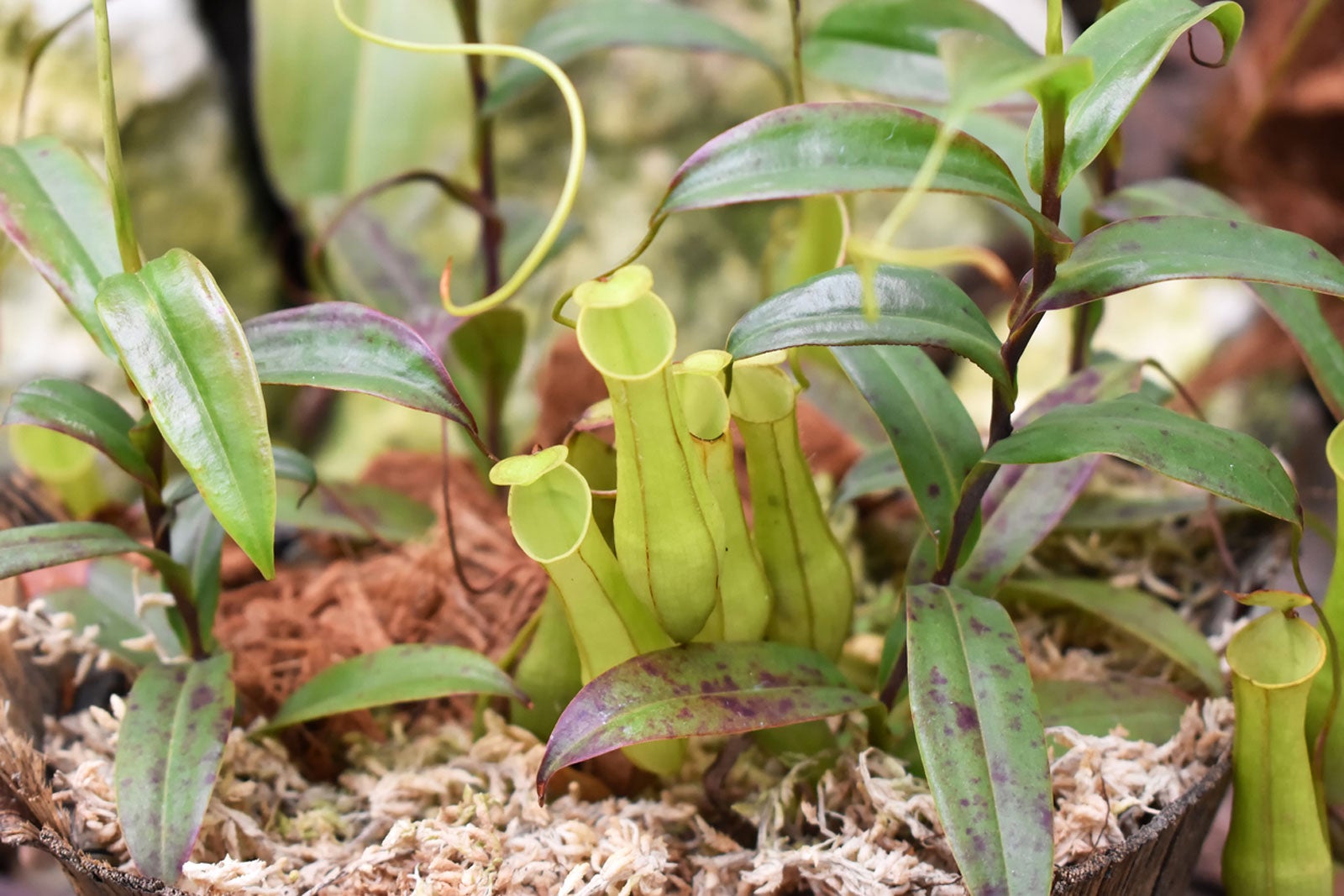Potted Bog Gardens – How To Grow A Bog Garden In A Container


A bog (a wetland environment with nutrient poor, highly acidic conditions) is uninhabitable for most plants. Although a bog garden can support a few types of orchids and other highly specialized plants, most people like to grow carnivorous plants such as sundews, pitcher plants, and flytraps.
If you don’t have space for a full-size bog, creating a container bog garden is easily done. Even small potted bog gardens will hold an array of colorful, fascinating plants. Let’s get started.
Creating a Container Bog Garden
To make your bog garden in a container, start with something measuring at least 12 inches (31 cm.) deep and 8 inches (20 cm.) across or larger. Any container that holds water will work, but keep in mind that larger bog garden planters won’t dry out as quickly.
If you have space, a pond liner or children’s wading pool works well. (The container should not have a drainage hole.) Create a substrate by filling the bottom one-third of the container with pea gravel or coarse builder’s sand.
Make a potting mix consisting of approximately one-part builder’s sand and two parts peat moss. If possible, mix the peat moss with a few handfuls of long-fibered sphagnum moss. Put the potting mix on top of the substrate. The layer of potting mix should be at least 6 to 8 inches (15-20 cm.) deep.
Water well to saturate the potting mix. Let the potted bog garden sit for at least a week, which allows the peat to absorb the water, and ensures the pH level of the bog has time to balance. Put your bog garden where it receives the proper amount of light for the plants you have chosen. Most bog plants thrive in an open area with plenty of sunlight.
Your bog garden in a pot is ready to plant. Once planted, surround the plants with live moss, which promotes a healthy environment, prevents the bog from drying out quickly, and camouflages the edges of the container. Check the bog garden planter daily and add water if dry. Tap water is fine, but rainwater is even better. Watch for flooding during rainy periods.
Gardening tips, videos, info and more delivered right to your inbox!
Sign up for the Gardening Know How newsletter today and receive a free copy of our e-book "How to Grow Delicious Tomatoes".

A Credentialed Garden Writer, Mary H. Dyer was with Gardening Know How in the very beginning, publishing articles as early as 2007.
-
 Looking For Plants To Give You The Soft And Fuzzies? Try These 5 Fuzzy Leaf Plant Options
Looking For Plants To Give You The Soft And Fuzzies? Try These 5 Fuzzy Leaf Plant OptionsLovers of texture, drama, silver foliage and tactile plants will adore these special sensory garden additions. These fuzzy leaf plant options will leave you all aglow
By Susan Albert
-
 Get Ready For A Summer Of Hummers! Grow These Full Sun Hummingbird Plants and Flowers
Get Ready For A Summer Of Hummers! Grow These Full Sun Hummingbird Plants and FlowersIf you’re lucky enough to enjoy a sunny backyard, make sure you are maxing out on your pollinator opportunities and grow these full sun hummingbird plants and flowers
By Tonya Barnett